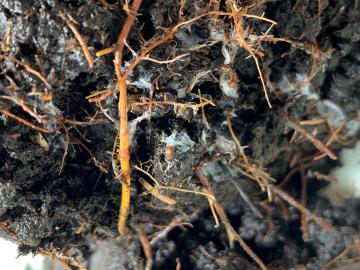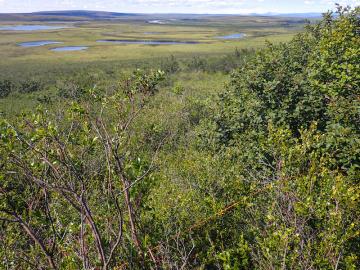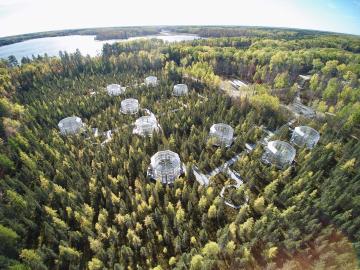
Filter News
Area of Research
- (-) Biology and Environment (51)
- (-) Quantum information Science (9)
- Advanced Manufacturing (5)
- Biology and Soft Matter (1)
- Computational Engineering (2)
- Computer Science (9)
- Electricity and Smart Grid (1)
- Energy Science (110)
- Energy Sciences (1)
- Fuel Cycle Science and Technology (1)
- Functional Materials for Energy (2)
- Fusion and Fission (32)
- Fusion Energy (11)
- Isotope Development and Production (1)
- Isotopes (28)
- Materials (78)
- Materials for Computing (9)
- Mathematics (1)
- National Security (38)
- Neutron Science (24)
- Nuclear Science and Technology (38)
- Nuclear Systems Modeling, Simulation and Validation (1)
- Supercomputing (92)
News Topics
- (-) Cybersecurity (3)
- (-) Energy Storage (7)
- (-) Frontier (3)
- (-) Isotopes (2)
- (-) Machine Learning (9)
- (-) Nuclear Energy (1)
- (-) Quantum Science (9)
- 3-D Printing/Advanced Manufacturing (11)
- Advanced Reactors (1)
- Artificial Intelligence (9)
- Big Data (10)
- Bioenergy (47)
- Biology (74)
- Biomedical (16)
- Biotechnology (14)
- Buildings (2)
- Chemical Sciences (12)
- Clean Water (11)
- Composites (5)
- Computer Science (25)
- Coronavirus (13)
- Critical Materials (1)
- Environment (91)
- Exascale Computing (4)
- Fusion (1)
- Grid (4)
- High-Performance Computing (20)
- Hydropower (8)
- Materials (12)
- Materials Science (6)
- Mathematics (4)
- Mercury (7)
- Microscopy (12)
- Molten Salt (1)
- Nanotechnology (8)
- National Security (3)
- Neutron Science (4)
- Partnerships (6)
- Physics (3)
- Polymers (2)
- Security (2)
- Simulation (15)
- Summit (10)
- Transportation (3)
Media Contacts

Ten scientists from the Department of Energy’s Oak Ridge National Laboratory are among the world’s most highly cited researchers, according to a bibliometric analysis conducted by the scientific publication analytics firm Clarivate.

Of the $61 million recently announced by the U.S. Department of Energy for quantum information science studies, $17.5 million will fund research at DOE’s Oak Ridge National Laboratory. These projects will help build the foundation for the quantum internet, advance quantum entanglement capabilities — which involve sharing information through paired particles of light called photons — and develop next-generation quantum sensors.

New data hosted by Oak Ridge National Laboratory is helping scientists around the world understand the secret lives of plant roots as well as their impact on the global carbon cycle and climate change.

To minimize potential damage from underground oil and gas leaks, Oak Ridge National Laboratory is co-developing a quantum sensing system to detect pipeline leaks more quickly.

Scientists at Oak Ridge National Laboratory added new plant data to a computer model that simulates Arctic ecosystems, enabling it to better predict how vegetation in rapidly warming northern environments may respond to climate change.

Scientists studying a unique whole-ecosystem warming experiment in the Minnesota peatlands found that microorganisms are increasing methane production faster than carbon dioxide production.

A team of researchers at Oak Ridge National Laboratory and Purdue University has taken an important step toward this goal by harnessing the frequency, or color, of light. Such capabilities could contribute to more practical and large-scale quantum networks exponentially more powerful and secure than the classical networks we have today.

Twenty-seven ORNL researchers Zoomed into 11 middle schools across Tennessee during the annual Engineers Week in February. East Tennessee schools throughout Oak Ridge and Roane, Sevier, Blount and Loudon counties participated, with three West Tennessee schools joining in.
A study by Oak Ridge National Laboratory, the University of Copenhagen, the National Park Service and the U.S. Geological Survey showed that hotter summers and permafrost loss are causing colder water to flow into Arctic streams, which could impact sensitive fish and other wildlife.

Six scientists at the Department of Energy’s Oak Ridge National Laboratory were named Battelle Distinguished Inventors, in recognition of obtaining 14 or more patents during their careers at the lab.


